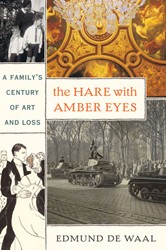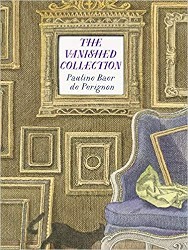The promise of assimilation offers no better illustration than the Camondos, an enormously rich family of financiers who were inevitably tagged as the Sephardic counterparts to the Rothschilds. Mayer Amschel Rothschild famously launched his career in Frankfurt. The Camondos did it their way — under the Ottomans in Constantinople, before moving, in the mid-nineteenth century, to France, where the experiment in Jewish emancipation had begun. Author Edmund de Waal is also a highly regarded ceramicist distantly related to the Camondos, and he depicts with awe their Parisian home. Imaginatively addressing himself to Count Moïse de Camondo (1860−1935), de Waal lavishes attention on the luxurious lifestyle that the splendor of the Belle Époque facilitated. The Right Bank home at 63 rue de Monceau was packed with arts décoratifs, and required fourteen servants to maintain. Moïse de Camondo bought one of Peugeot’s first automobiles; he also enjoyed yachting and hunting, and owned racing stables. Endowed with exquisite taste, this collector and connoisseur generously supported the Louvre, and patronized contemporary painters like Renoir, too. In Letters to Camondo, Marcel Proust darts in and out of the lives of Camondo’s cultivated and cosmopolitan family; so does the Jewish prime minister, Léon Blum.
The Camondos understandably prided themselves on the depth of their loyalty to France and to its egalitarian ideal of civic rights. Despite the Dreyfus Affair, this family felt insulated from the lurking danger that antisemitism posed. Equanimity wasn’t shattered until the heir apparent, Nissim de Camondo, was killed in World War I — a war so bloody and so senseless that both the Bolsheviks and the Nazis would triumph in its aftermath.
Soon neither immense wealth nor French citizenship would keep this family outside the gates where “Arbeit Macht Frei.” Nissim’s sister, his brother-in-law, and their two children were murdered in Auschwitz. Their end is recounted in the longest chapter in de Waal’s slender volume, and the impact is devastating. It makes this book the equivalent of films like Woman in Gold (2015), in which the Holocaust spells the grim end of a rich and sophisticated Viennese Jewish family, and The Garden of the Finzi-Continis (1970), in which Fascism dooms a similar family in Ferrara. Letters to Camondo extracts no instructive lesson on the perils of assimilation, however, or even proof of the delusion that patriotism and politesse can guarantee safety. The Final Solution extinguished the very pious and the very poor too. If a larger moral can be found at all, it is the historical precariousness of Jewish existence itself.
Stephen Whitfield is Professor of American Studies (Emeritus) at Brandeis University. He is the author of Learning on the Left: Political Profiles of Brandeis University (2020).





